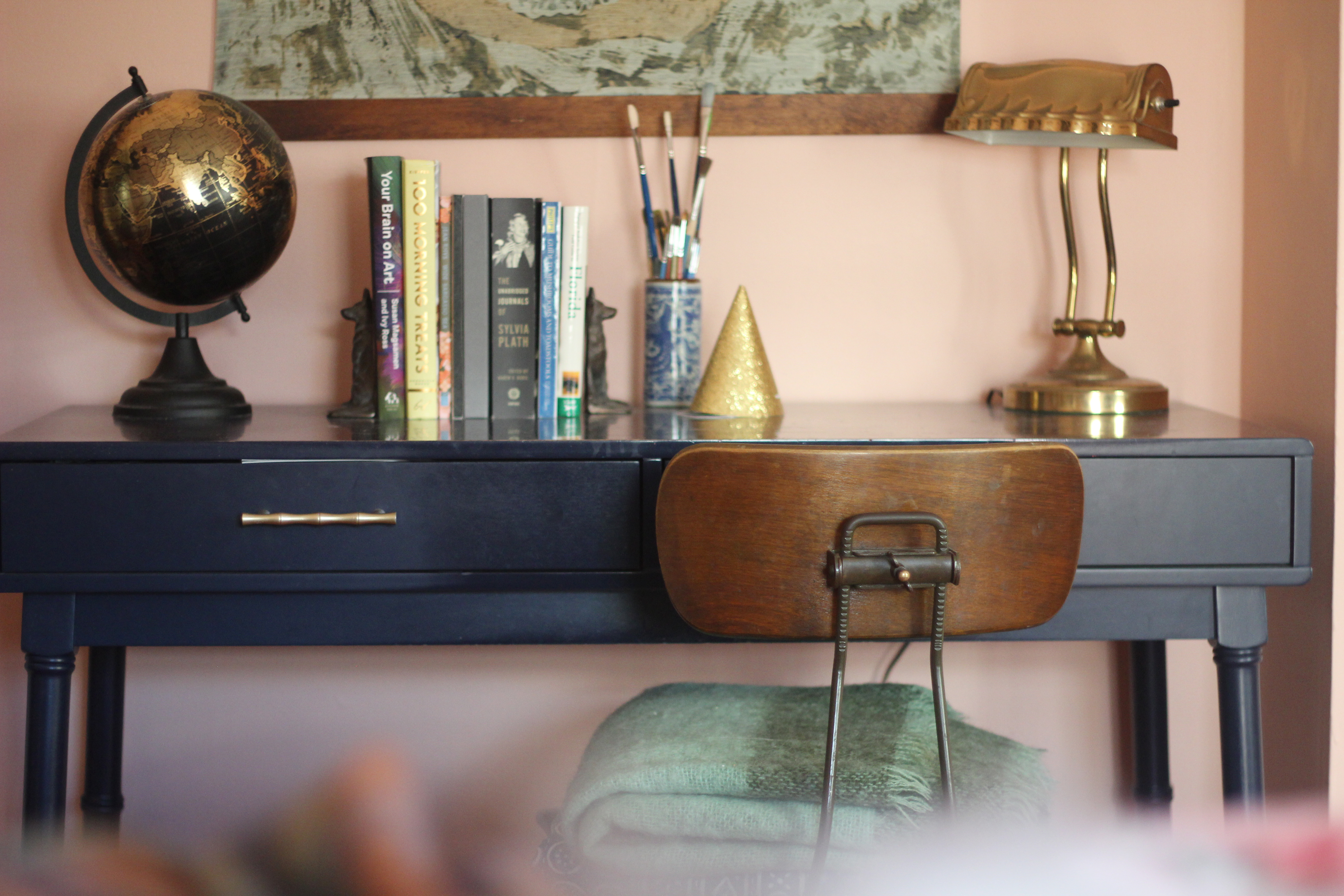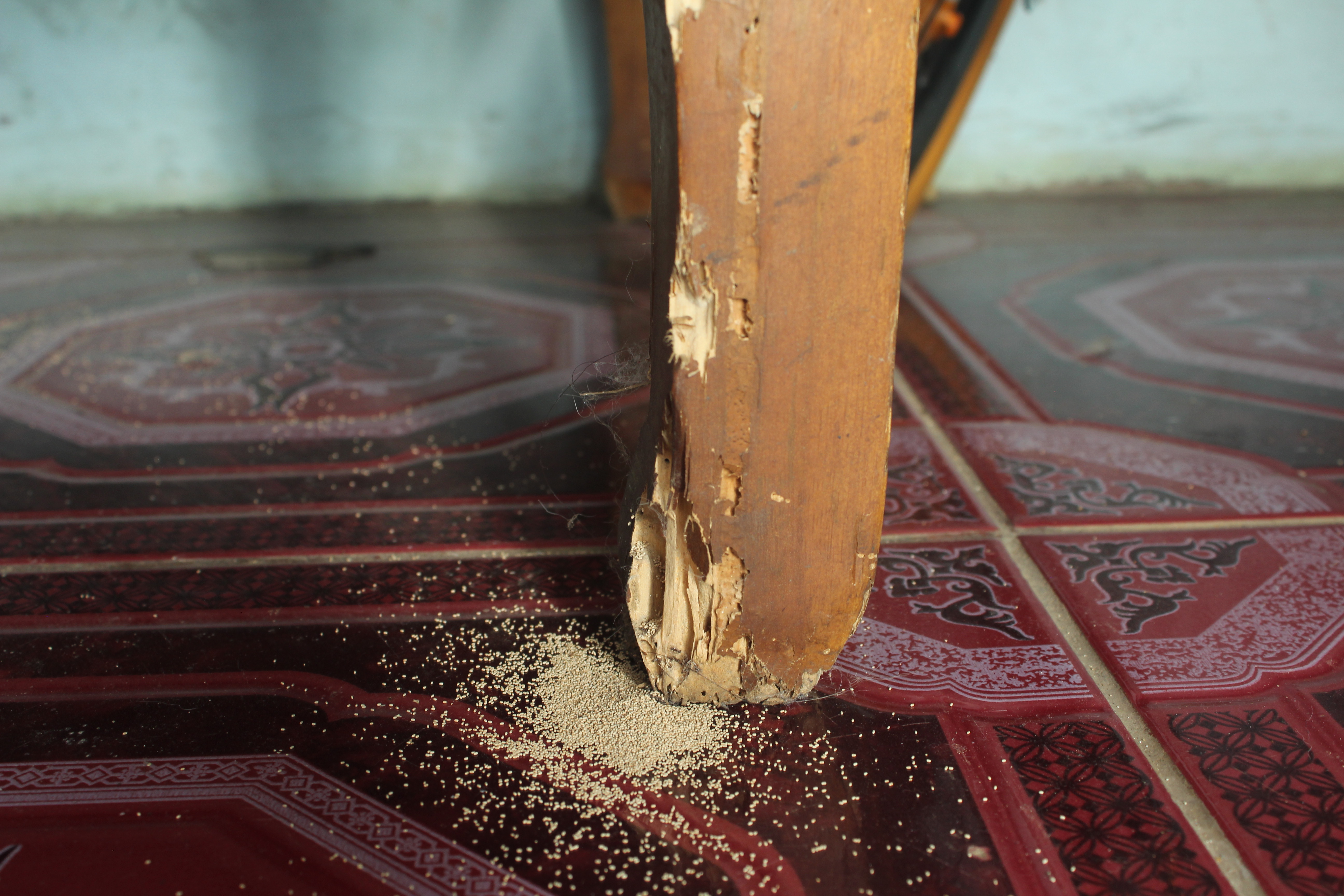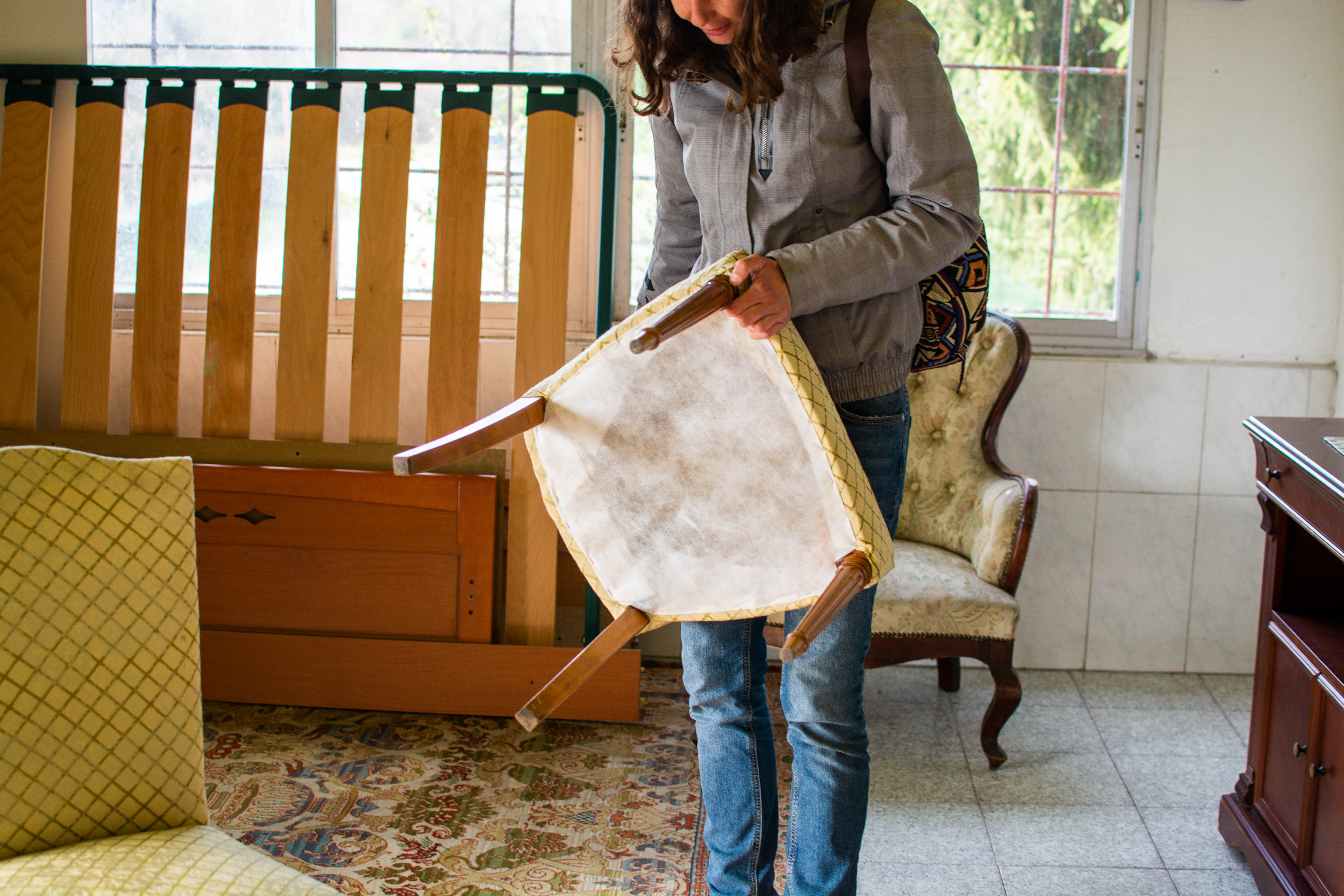
If you need to get rid of bugs and pests making your home unsafe, it's time to decide if fumigation is necessary. Learn more about average fumigation costs.
You may be bringing in more than a piece of furniture into your home


Termites, wood-boring beetles, and carpenter ants can hide in wood furniture.
Signs of a hidden bug infestation include tiny holes, wood dust, strange noises, and more.
Other warning signs are a musty odor or weak wood.
You should always inspect pre-owned wood furniture for bugs before bringing it inside.
There are many types of bugs that will munch and live in wood furniture if given the opportunity. For example, carpenter ants, powderpost beetles, and deathwatch beetles are common wood-eating bugs in addition to termites. These pests can hide in wood furniture and spread into other areas of your house.
That’s why you should look for signs of bugs in wood furniture before you bring it into your home. Learn the warning signs to help identify if wood furniture has a bug infestation so you can get rid of them before they cause bigger issues.
Before you bring that vintage wood hutch from the flea market into your house, you should look for these signs of bugs in wood furniture to avoid an infestation.
Tiny holes on wood furniture can indicate a bug infestation. Termites, wood-boring beetles, and carpenter ants can cause small holes in wood. However, carpenter ants do not consume the wood like termites, and wood-boring beetles do. The holes are from the bugs excavating the wood to create tunnels to build their nests.
Holes made by carpenter ants will be bigger than those from termites or wood-boring beetles. Inspect the entire piece of furniture and look closely for tiny holes that may be from these types of pests.

Wood dust on or beneath furniture is another sign of a bug infestation. This dust is also called “frass,” which can be a combination of wood with waste or insect parts. For example, dry wood termites will kick out the frass from the holes, and it can be around the holes themselves or drop down to the floor.
If you see frass on your wood furniture or other areas of your home, it’s best to leave it because it can help the exterminator identify the type of pest.
Although other factors may cause furniture to have weak and crumbling wood, it can also mean it contains a severe bug infestation. Wood-boring pests can cause structural damage by tunneling and feeding on the wood. For instance, wormwood beetle larvae will burrow and feed on the wood, causing it to crumble and become weak.
If the piece of furniture seems fragile or shows signs of crumbling, check for other signs that it may be from wood-boring pests.
If you hear unexplained clicking, tapping, or rustling noises nearby, it can be coming from wood-boring pests. In fact, soldier termites will bang their heads against the tunnel walls to warn the rest of the colony of danger.
Larger infestations will cause more noise, so keep an ear out at night to hear if you have a bug problem on your hands.
Musty and moldy odors can be caused by various factors such as mold and water damage, but it can also stem from bugs—especially termites. These pests are attracted to damp wood which can already have a musty odor, but their waste and the further damage they cause can also contribute to the smell. The damage done by wood-boring beetles can also cause this odor because it can contribute to mold growth.
If you have signs of wood-boring bugs in furniture inside your home, you should consider hiring an exterminator near you to identify and treat the pests. If the infestation gets out of control, the bugs can spread into other areas of your home, which can lead to costly repairs if left untreated. In fact, according to Britannica, queens that belong to more advanced termite families can produce 36,000 eggs a day.
Needless to say, time is of the essence when dealing with a termite infestation. However, other wood-boring pests can also cause structural issues if left untreated, so having a professional handle the task can save you money in the long run by preventing property damage.

There are some DIY steps you can take to get rid of bugs in wood furniture, but it can be difficult if you are unable to determine what pest you are dealing with. To treat wood-boring beetles, you will need borate-based products, while something like diatomaceous earth may kill off carpenter ants. However, you may be unable to apply the powder directly to the nest, inhibiting its effectiveness.
You need to ensure you don’t use something on the furniture that can cause damage to it. It’s also vital that you keep pets and children away from any pest control treatment and wear protective gear when applying it.
Some wood-boring bugs can cause damage faster than others, but it’s better to try to prevent them from finding a home in your furniture than having to remove them. Here are some things you can do to help prevent bugs in wood furniture:
Avoid Storing Furniture in Damp Areas: Wood-boring beetles and termites love damp conditions because it provides them with the moisture they need to survive. You can prevent them from getting into your wood furniture by storing it in a temperature-controlled climate.
Seal the Wood: Applying varnishes or wood sealant makes it more difficult for wood-boring pests to penetrate through to invade your furniture.
Use Essential Oils: Sometimes pests can be repelled by using certain scents of essential oil such as peppermint, clove, and tea tree. However, it’s best to research the oil and type of wood to see if it’s safe to use and will not cause damage. You should also always perform a spot test first.
Inspect Pre-Owned Furniture: Always inspect pre-owned furniture for signs of bugs before bringing it into your home. Try to isolate the item for a few days to allow time for pests to show signs of activity.
The price of pest control depends on various factors, such as the type of pest, severity of infestation, and how many treatments are needed. The average cost to hire a pest control specialist ranges between $50 and $500 or more.
However, it’s worth hiring a professional because they have the knowledge and equipment required to eradicate whatever pests you are battling in your home.
From average costs to expert advice, get all the answers you need to get your job done.

If you need to get rid of bugs and pests making your home unsafe, it's time to decide if fumigation is necessary. Learn more about average fumigation costs.

Whether you have bugs, bats, or rodents invading your home, you’ll want to contact an exterminator quickly. Find out how much pest control costs in Columbus, OH.

Sometimes birds nest in unwelcome places. Find out how much bird nest removal will cost based on factors like location, bird species, and preventative measures.

No one wants wasps setting up shop in their yard but that doesn’t mean you should try to DIY their removal. Here are five reasons to leave wasp removal to the professionals.

If you’re a fan of essential oils, some believe you can use them to deter pests like spiders, mice, and other rodents. Learn more about how you may be able to use essential oils like to help leave your home pest-free and smelling great.

From the hooded skunk to the Eastern spotted skunk, learn how to identify common types of skunks you may see in your backyard or digging through your trash.